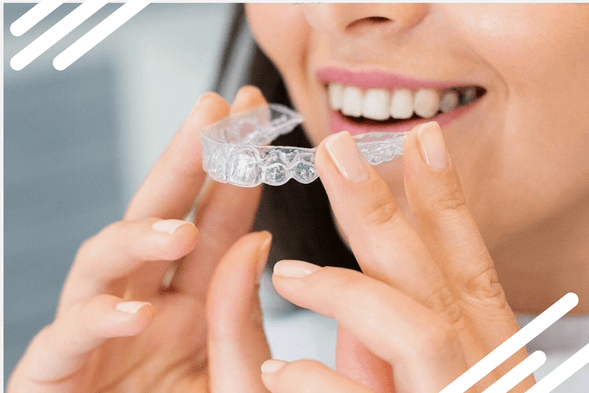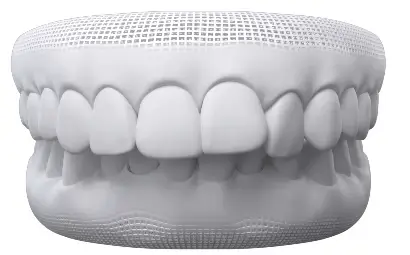There are multiple types of retainers for teeth available to you these days. We want to help you know which is best for you.
Here is a guide to the main types of retainers for braces and Invisalign patients in 2022, the benefits of each, and also the downsides. When you’re done reading this post, you’ll have what you need to be confident your smile is in the care of the right retainer.
What Are The Benefits Of Retainers?
The purpose of retainers is to keep your teeth from moving after you’ve had them straightened with braces or Invisalign treatment. Each type of retainer has its advantages and drawbacks and the type should be discussed with an orthodontist who knows about your specific needs.
While everyone is different, on average, it takes up to 6 months for your teeth’s new, straightened position to become permanent. During that period, your teeth are especially at risk of shifting back into their old positions. Retainers are given to you by your doctor to make sure your teeth stay straight and look great.
Teeth will always have a tendency to want to shift over time. There are multiple reasons for this including tongue position, clenching and other forces put on teeth over a period of time.
Also, everyone is different so how your friends wear their retainers could be completely different than what you need to do yourself to keep your teeth straight and your winning smile.
What Are The Different Types Of Retainers?
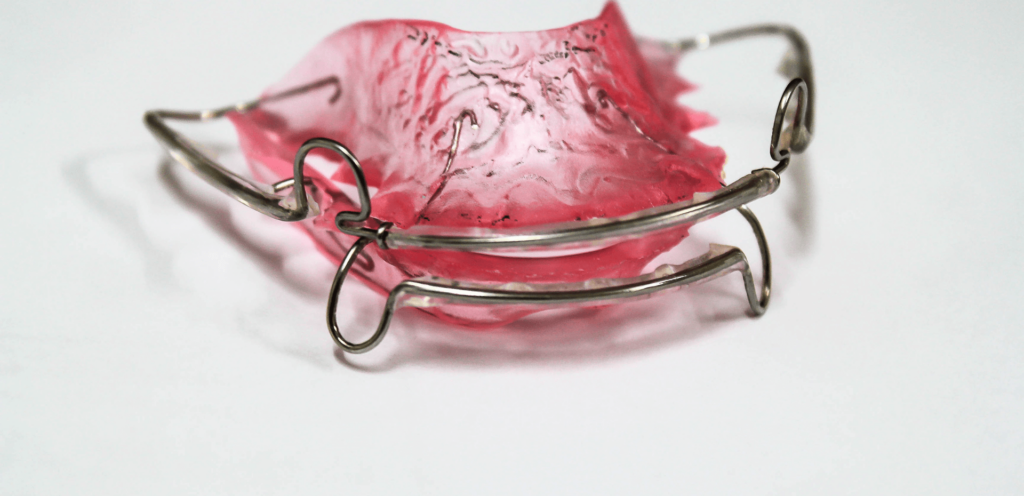
Hawley
Hawley retainers are the old-school retainers that are still used very effectively today in many cases. Some people refer to the Hawley retainer as ‘wire retainers’ because they’re made of thin metal wire and plastic (or acrylic).
It’s removable and shaped to fit the roof of your mouth or along the inside of your lower teeth. Many patients would have both the upper and lower Hawley retainer. The wire runs along the outside of your teeth to keep them straight.
Benefits
- Durable, and can last for years even with regular use if cared for properly
- Colors and pictures/stickers can be added, which makes them a favorite of many children.
- Teeth can settle more easily in this type of retainer.
- Your upper and lower teeth are still able to touch naturally with the Hawley retainer, which makes it feel more natural to use.
Drawbacks
- Because they’re removable, compliance is key to keeping your teeth straight.
- The front wire can break if pulled on to remove.
- Most patients do experience a little longer learning curve to speaking normally because the Hawley retainers are a bit bulky.
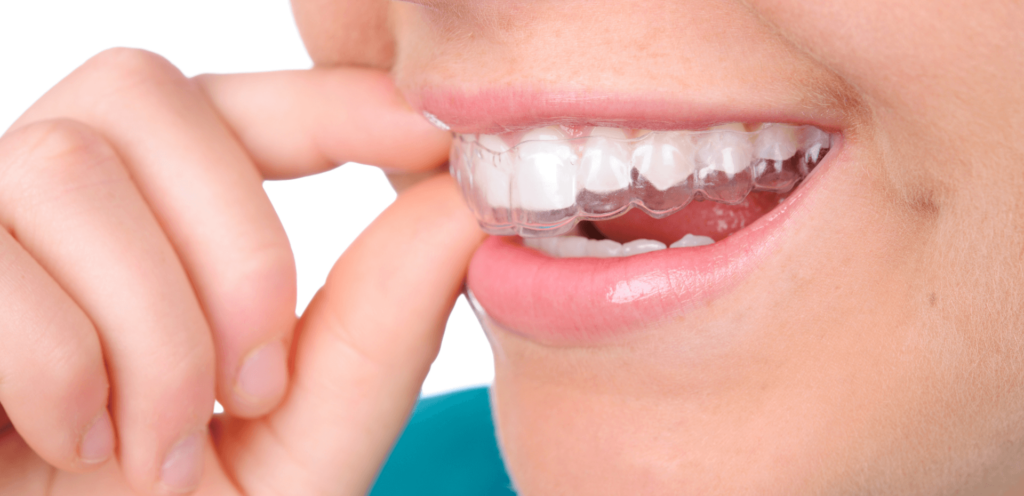
Clear Retainer (Overlay Retainer)
These are the clear, plastic retainers that fit over the entire tooth. They’re molded to fit the new position of your straight teeth.
Sometimes they will be referred to as ‘overlay retainers’ because of how they overlay your teeth, which is different than other retainer types.
Clear retainers are removable and are virtually invisible even at normal conversational distances.
Benefits
- Easier to speak with compared to Hawley retainers.
- Protect your teeth from damage if you might clench or grind your teeth.
- Virtually invisible and more esthetically pleasing than other retainer types – which can help you be more likely to wear your clear retainers.
Drawbacks
- Clear retainers are easier to break by taking out of your mouth incorrectly vs. other retainers.
- If they do break, they can’t be repaired. They must be replaced.
- If you stop wearing your clear retainer and your teeth move, you’ll have to get new retainers. They can’t be adjusted.
- They can wear down depending on the amount of your clenching or grinding.
- Like Hawley retainers, because they’re removable, compliance is critical to keeping your teeth straight.

Invisalign Retainers
Invisalign retainers are often mistaken for their own category of retainers, but in reality, they are actually a version of clear retainers.
The same company that makes Invisalign aligners also makes their own brand of clear retainers – the brand name is Vivera retainers.
For the most part, Invisalign retainers have all the same pros and cons as other clear retainers with just a few differences.
Benefits
- Invisalign says that the Vivera retainer material is at least 30% stronger and 2x as durable as other leading clear retainer materials. (With all of the different companies making retainers these days, however, it is a questionable claim.)
Drawbacks
- If you haven’t had Invisalign treatment, the Vivera retainers may be an additional cost to your treatment rather than being included in the Invisalign treatment price.
- Other clear retainers are probably as good or better than the Invisalign Vivera choice.
Bonded Wire
The bonded wire retainer is a wire or bar glued to the back of your teeth. When you hear people talk about ‘permanent retainers’, they’re likely referring to the bonded wire retainer.
Orthodontists are most likely to use bonded wire retainers when they believe teeth are very likely to relapse or when the patient may be less likely to follow wearing instructions (like with young children).
It is most often used on the lower anterior teeth of patients that had braces. It may also be used on upper anterior teeth, but is more prone to breakage due to the forces applied during biting or eating.
Benefits
- Since it is glued in place, wearing the retainer and compliance are guaranteed.
- It’s very unlikely to impact your speaking at all.
- Tends to be durable and may last for years if you are careful.
Drawbacks
- Like with braces, you’ll need to avoid chewy or sticky foods as it tends to increase the chances of the retainer coming loose.
- The bonded wire retainer makes it more difficult to floss than other retainer types.
Permanent Retainers vs. Removable Retainers
Permanent Retainer Benefits
- It’s permanently fixed in your mouth, so you don’t have to worry about compliance.
- It isn’t visible to others, and doesn’t impact your speech.
- They are durable and difficult to damage.
- Permanent retainers have a very high rate of success in keeping your teeth straight and aligned.
Removable Retainer Benefits
- They’re removable, which gives you a lot more flexibility to take them out when you are eating or cleaning your teeth.
- Cleaning your teeth completely and flossing is a lot easier than with permanent retainers.
- They’re very easy to clean so that they stay fresh and hygienic as you wear them.
- Some removable retainers, like clear retainers, can help protect your teeth if you tend to clench or grind.
Permanent Retainer Drawbacks
- Brushing and flossing with permanent retainers requires extra focus and effort.
- You aren’t able to remove it.
- You need to avoid certain types of chewy or sticky foods.
- The wire can break, and that requires repair or replacement.
Removable Retainer Drawbacks
- Compliance is very key to success. If you don’t wear them, your teeth won’t stay straight.
- Removable retainers can impact your speech, especially when you first start wearing them.
- Tend to break more often than permanent retainers, and in some cases, must be replaced rather than repaired.
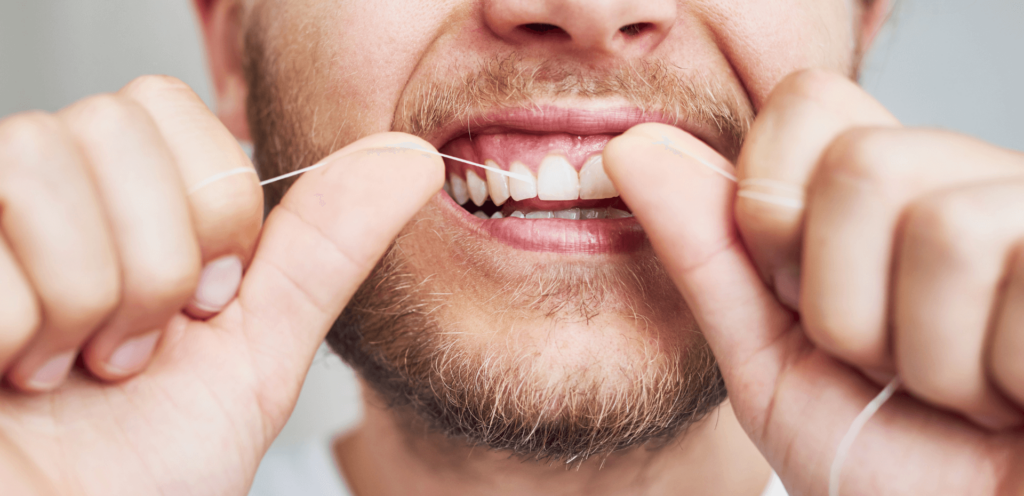
How to Clean Your Teeth with Permanent Retainers
First thing’s first: ask your doctor for tips on how to clean your retainer and do it regularly. Keeping your retainer clean is the best way to protect your teeth and leave your mouth feeling nice and fresh.
Brushing your teeth is pretty much the same as always, but take a little extra care to get the bristles of your toothbrush in and around all the new crevices created by the retainer.
We recommend patients to brush their teeth like normal and then spend an extra 30 seconds to a minute specifically going over all the areas near bonded material or around the wire itself. It’s an easy way to make sure you’ve covered those areas well.
Flossing is a little more challenging, but once you get a routine down, it’s not as bad as everyone makes it out to be. Here is what we suggest:
- Use a normal length piece of floss, or a little longer than normal.
- You might be tempted to feel like you have to really force the floss in between your teeth, but it’s actually easier if you do it gently. That’ll help you avoid cutting your gums, too.
- Softly raise and lower the floss along each of your teeth from where they meet the gums all the way to the end of your teeth. Do this 2-3 times per tooth.
- Move on to the next tooth and repeat these steps until you’ve flossed all your teeth.
It’s really not harder than normal flossing, but it is different so it takes some practice. Stick with it and you’ll get the hang of it in no time.
Conclusion
Permanent retainers can be a very convenient alternative to having a removable retainer, but they’re not for everyone.
While they’re great for patients with a high chance of relapse, they can be far more restrictive than necessary for many other patients.
Talk to an orthodontist about your options and what type of retainer is best for you. As you share with them your priorities and needs, a good orthodontist will be able to point you in the direction that’s best for you.
At Dickerson Orthodontics, your initial consultation is completely free. Schedule your appointment today and we’ll help you determine which type of retainer is the best one for you.

